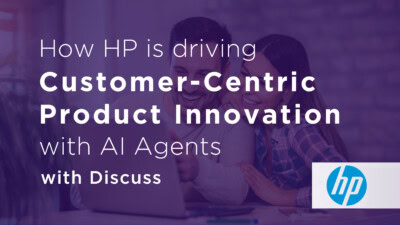3 Ways to Remove Bias from the Interview Process with Tech Tools

Bias isn’t always conscious. Try as you might to fight against personal predispositions, bias can still find its way into the interview process. According to a recent LinkedIn survey, 42% of talent professionals and hiring managers feel that interviewer bias is a problem.
This isn’t just a social issue, either. When companies allow bias to affect hiring decisions, it could prevent them from getting the best candidate for the job, could introduce unintentional discrimination into the workplace, and limit a company’s culture of inclusion and diversity.
Why does that really matter? One survey found that for every 1% rise in a workforce’s gender and cultural diversity, there were corresponding increases of 3% and 9% in sales revenue, respectively. McKinsey research reveals that organizations with diverse executives teams are one-third more likely to enjoy above-average profits. The same research also indicates that the businesses with gender-diverse executive teams were 15 to 21% more likely to be more profitable than average.
What’s the lesson? Unintentional interviewer bias can ultimately impact the bottom line for your business negatively.
How can you remove bias from your HR interviews, including bias of which you might not be aware?
As is the case with many modern problems, technology may be able to help. Here’s how:
1. Remove gender-leaning words from the job description
The wording of your job posting can contain hints of gender and age bias, according to Harvard Research. For example, seemingly harmless words like “rockstar” or “ninja” are two increasingly popular terms in modern job postings that have been shown to discourage female applicants. These same terms can also imply the company is seeking younger workers.
One way to avoid unintentional bias at the job listing level is to run your content through tools like Textio first. AI tools can detect language that lacks diversity and reveal wording that could impact your applicant pool. You can also have your postings written by an objective third party.
2. Maintain a consistent interview process
HR interviews can serve as opportunities to connect with candidates, but this can be a slippery slope. Once you connect over a certain event or feeling, this connection can help to sway the interview in that candidate’s favor, regardless of the candidate’s ability to do the job.
To avoid the potential for bias, it’s best to stick to a script to ensure each candidate is asked the same questions and receives a fair chance to demonstrate their suitability for the position. Discuss.io’s platform provides writing services for screeners and discussion guides to help interviewers stay on track during sessions. It also displays the content on-screen during the video job interview to aid the interviewer in maintaining consistency over the course of multiple interviews.
3. Record the interview to support a fair process

A video job interview provides a number of benefits in removing potential bias.
Recording the interview allows recruiters to replay it for more information instead of relying simply on their initial impressions. Rethink your gut reaction as you listen to and compare each candidate.
There’s also a greater level of accountability during a video job interviewing process when there is more than one recruiter or interviewer. Recruiters may pay closer attention to their words and responses when there is potential for others to listen to the interview.
How Discuss.io’s Platform Empowers an Unbiased Interview Process
Bias in interviews can be detrimental to your organization, both in terms of moving your mission forward and in attracting qualified candidates in the future. The best approach is to standardize the process as much as possible so that every candidate receives the same experience, regardless of age, gender, race, or other areas ripe for bias.
Discuss.io’s platform helps companies do exactly this with several key features, including:
- Discussion guides, which help interviewers to maintain consistency and stay on track through multiple interviews with all candidates
- Interview recordings, which enable interviewers to share interviews with collaborators and key decision-makers in the hiring process
- Shared moments, which are mini-recordings that interviewers can capture in which candidates say or do something illuminating to the interview or selection process
- Key takeaways, in which interviewers can capture their immediate thoughts after an interview concludes to share with collaborators
These are just a few of the key benefits that Discuss.io provides for hiring professionals. To see our platform in action, why not take a moment to request a demo today?
Ready to unlock human-centric market insights?
Related Articles

3 Steps to Creating an Intriguing Screener
The reality is that people are busy. They don’t want to take the time to answer screener questions which can…
The reality is that people are busy. They don’t want to take the time to answer screener questions which can…

How to Find the Right Target Audience, Every Time
Recruiting research participants can be one of the most difficult aspects of qualitative projects. But when you do find the…
Recruiting research participants can be one of the most difficult aspects of qualitative projects. But when you do find the…

How to Design a Consumer Empathy Study
It’s tempting to consider starting a market research project with a totally open mind. You find some customers and just…
It’s tempting to consider starting a market research project with a totally open mind. You find some customers and just…



